
3.5 billion years ago, being present then and now,
the oldest known organism is living among us.
The catalyst and the changer of Earth’s life forms,
creating the oxygenic atmosphere as we know and breathe.
Breathe breathe breathe, say hello to cyanobacteria.
At a broad range of wavelengths and light intensities,
this oxygenic photosynthesis organism performs the solar energy conversion,
of water and CO₂ to O₂ and sugar.
Being an important part of the global ecology and oxygen cycle,
and yet with higher water temperature and generous stir
of phosphorus, nitrogen and weak water management,
it becomes a noxious energy blend.
Blooming blooms, blooming blue-green algal blooms,
the greenish surface taking over the water and air,
producing cyanotoxin, some of the most powerful natural poisons known.
The excess energy creates the toxic cocktail of green,
becoming a creator of oxygen dead zones, the hypoxic zones.
The visible effect of cultural eutrophication, I see you.
Moved by the flows of geopolitics, power, waste and fertilisers,
the jellyfishes are present too, floating carelessly.
Breathing in the saturated water,
rising slime, and other blooms.
I’m here at the seaside, lungs filled with the air of hypoxic water,
walking on, and holding a limestone piece,
accumulation of the once marine environment,
dating back perhaps 440 million years.
I take a sip of the mineral water, which label says:
water from the depths of Cambrian-Ordovician-Silurian times.
My mouth becomes full of aquatic history.
Do you remember?
Author of the text: Kristina Õllek



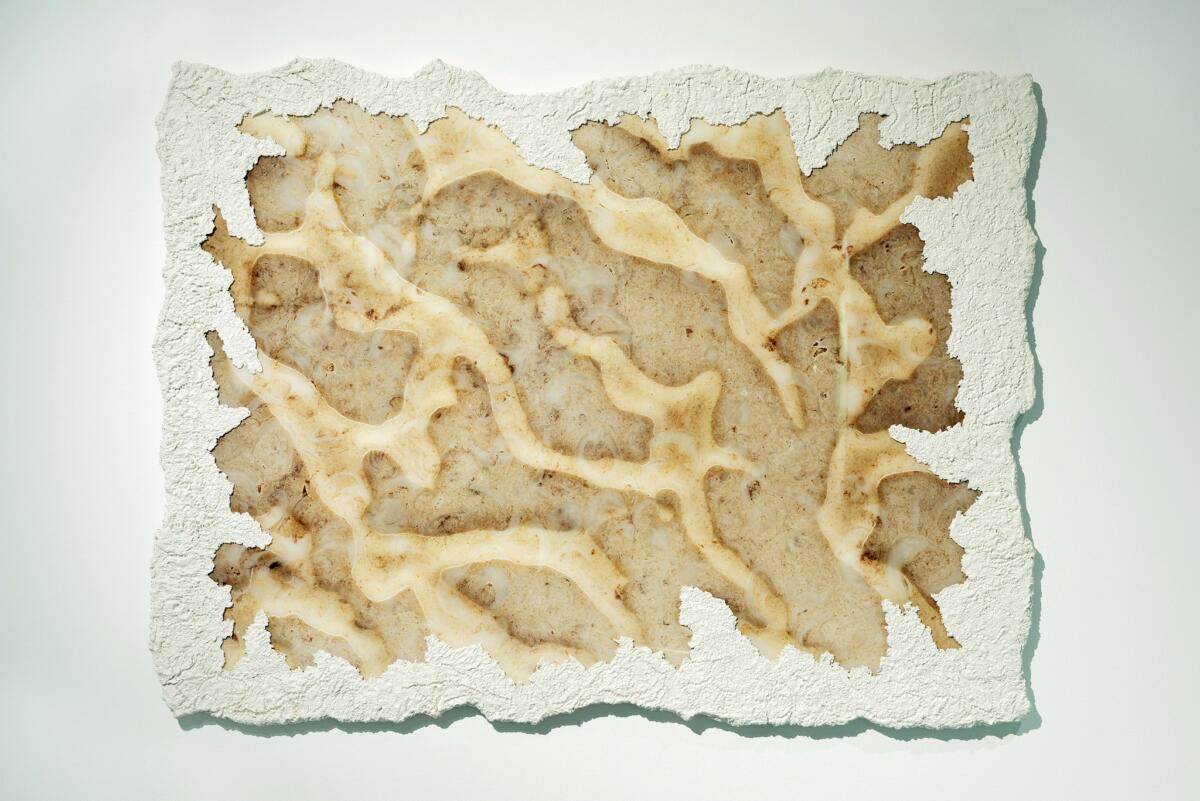
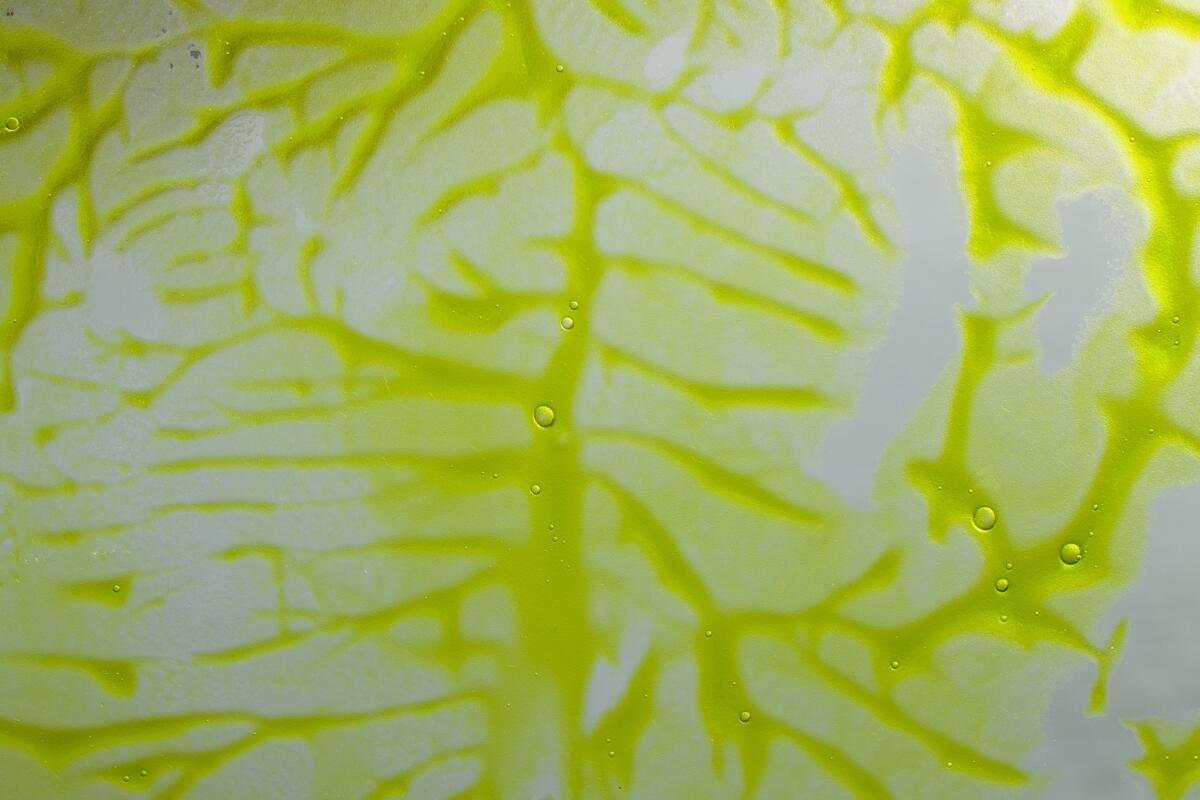
Kogo Gallery, based in Tartu, Estonia, currently hosts Kristina Õllek’s solo exhibition “Waters of Hypoxic Slime and Tropic Lime”. The exhibition centers on the study of the Baltic Sea area, with a focus on its marine ecology, cyanobacteria and sediments. Comprising photographic and sculptural elements – the artist thinks together with and about the aquatic and Baltic Sea area – its presence, past and future speculative scenarios and its changing composition of ecology and marine chemistry. The exhibition remains open until 20 May.
As a continuation of her recent solo exhibition “Filtering With Cyanobacteria, Double Binds and Other Blooms” at the ISSP Gallery (Riga, Latvia), Õllek explores the geological and chemical changes of the Baltic Sea. The Baltic Sea is one of the world’s most polluted seas due to intensive agriculture, hazardous substances, domestic and industrial wastes, marine litter and underwater noise that has affected its ecosystem. It is a semi-enclosed sea with a slow water exchange and its recovery capacity is, therefore, relatively limited. The excess nutrients in the water (fertilisers, etc.), inadequate water treatment, and rising sea temperatures create eutrophication and significantly affect the cyanobacteria community, leading to increasing annual cyanobacteria blooms. The toxic blue-green algal blooms create hypoxia, highly depleted and oxygen-poor areas. These areas are called ‘dead zones’ and they have a major impact on marine ecology. In addition to these annual dead zones, there’s also approximately 60,000 – 80,000 km2 of the Baltic’s seabed in a variable dead zone due to water that is more saline and denser that remains on the bottom, therefore isolating it from surface waters and the atmosphere.

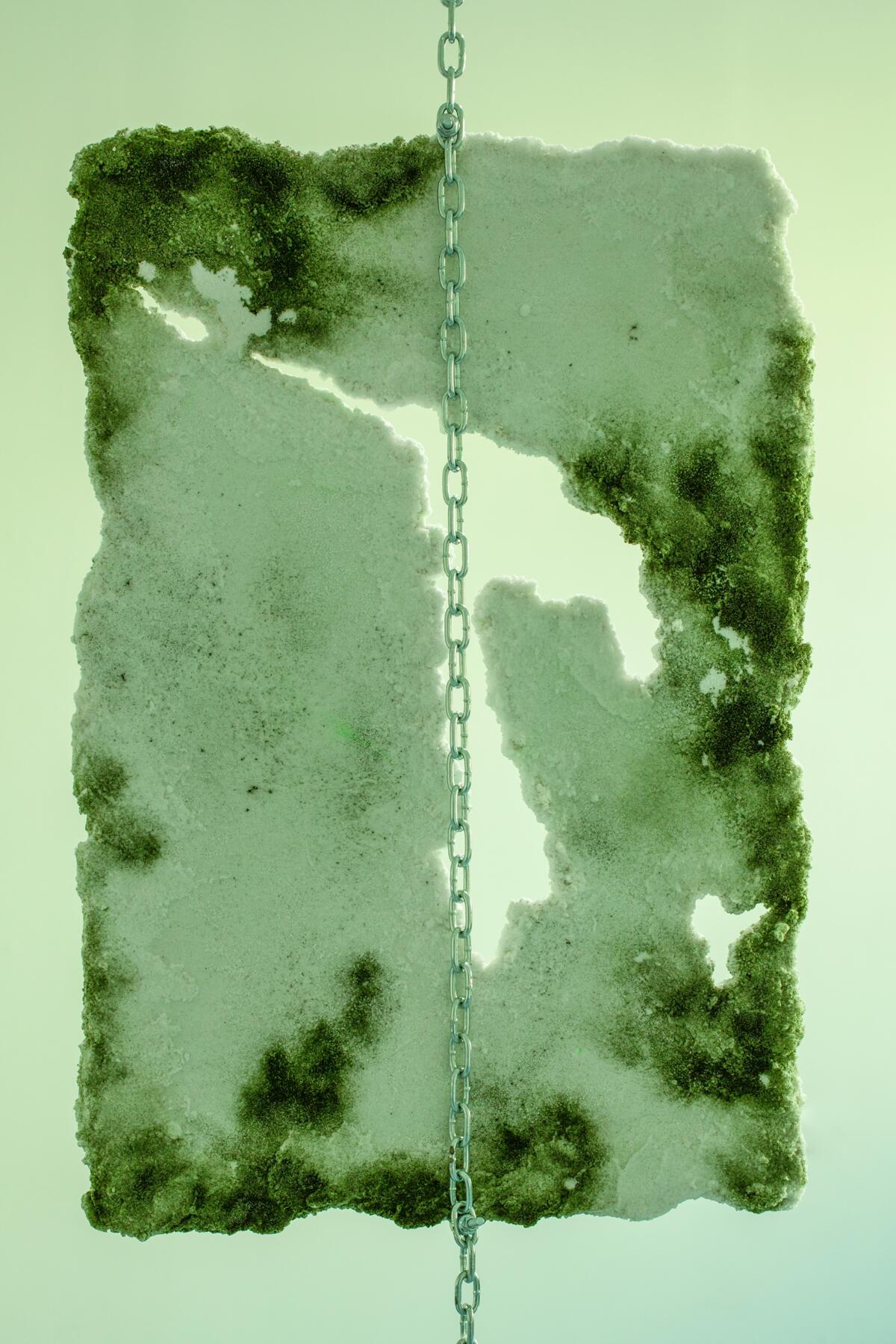


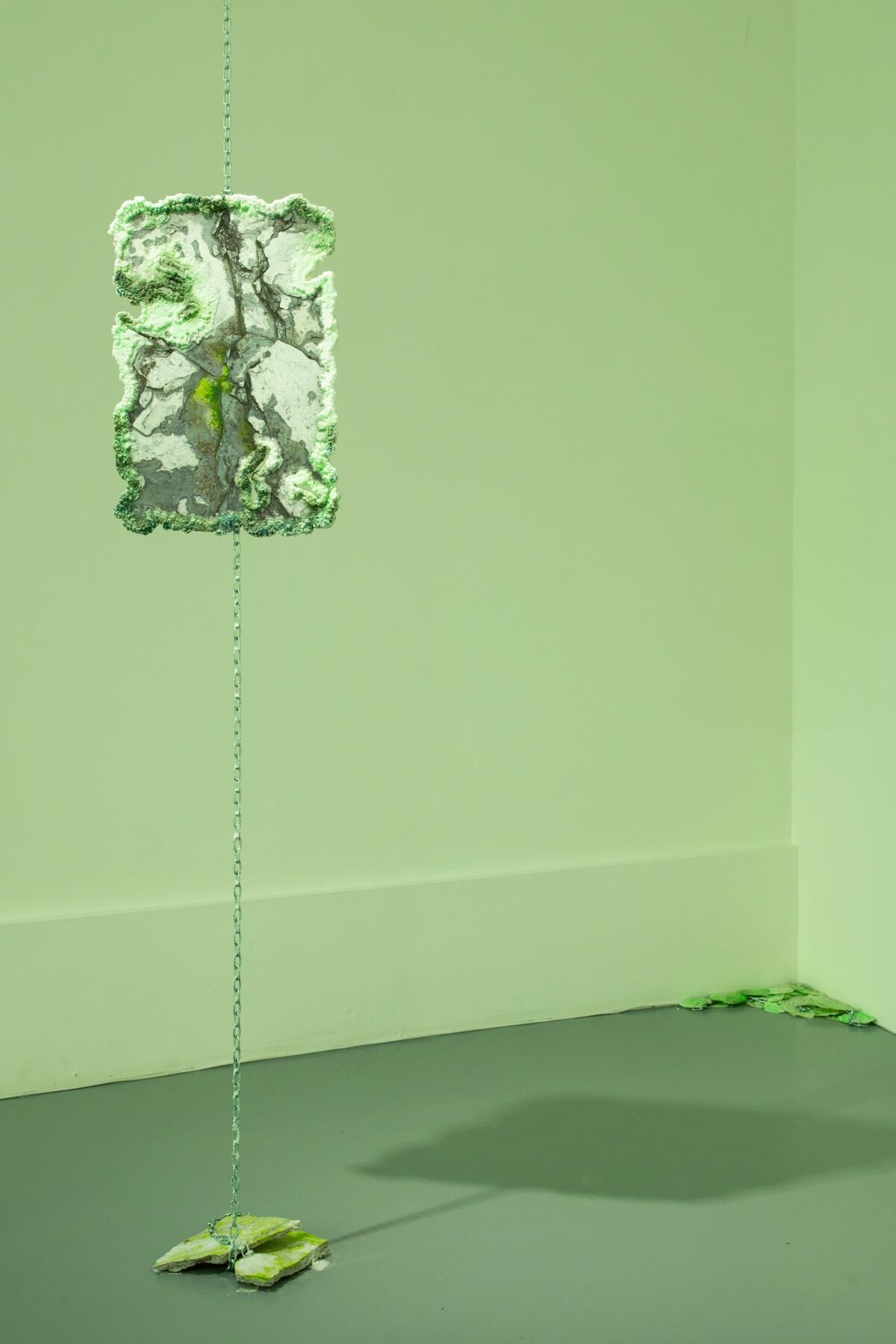
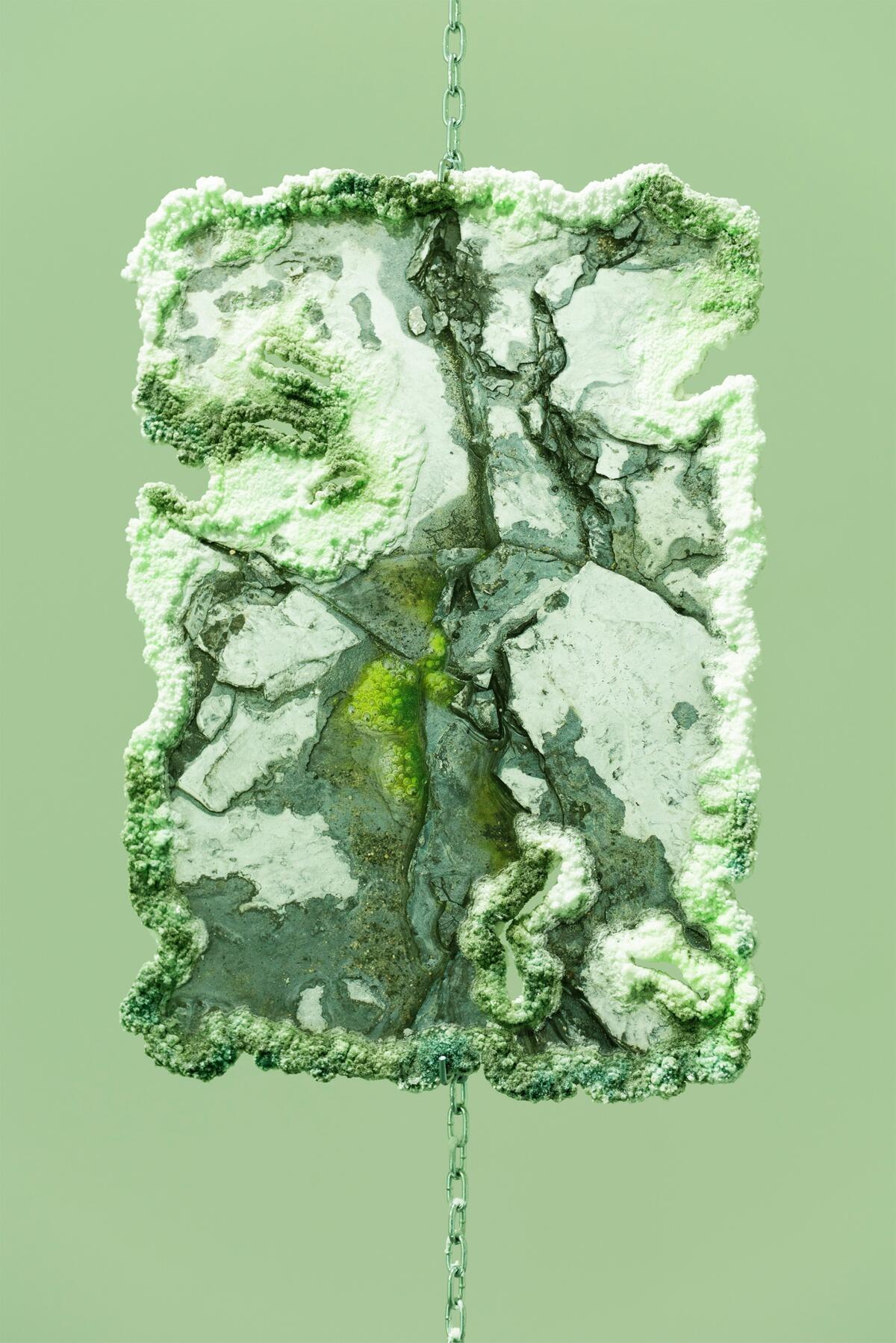
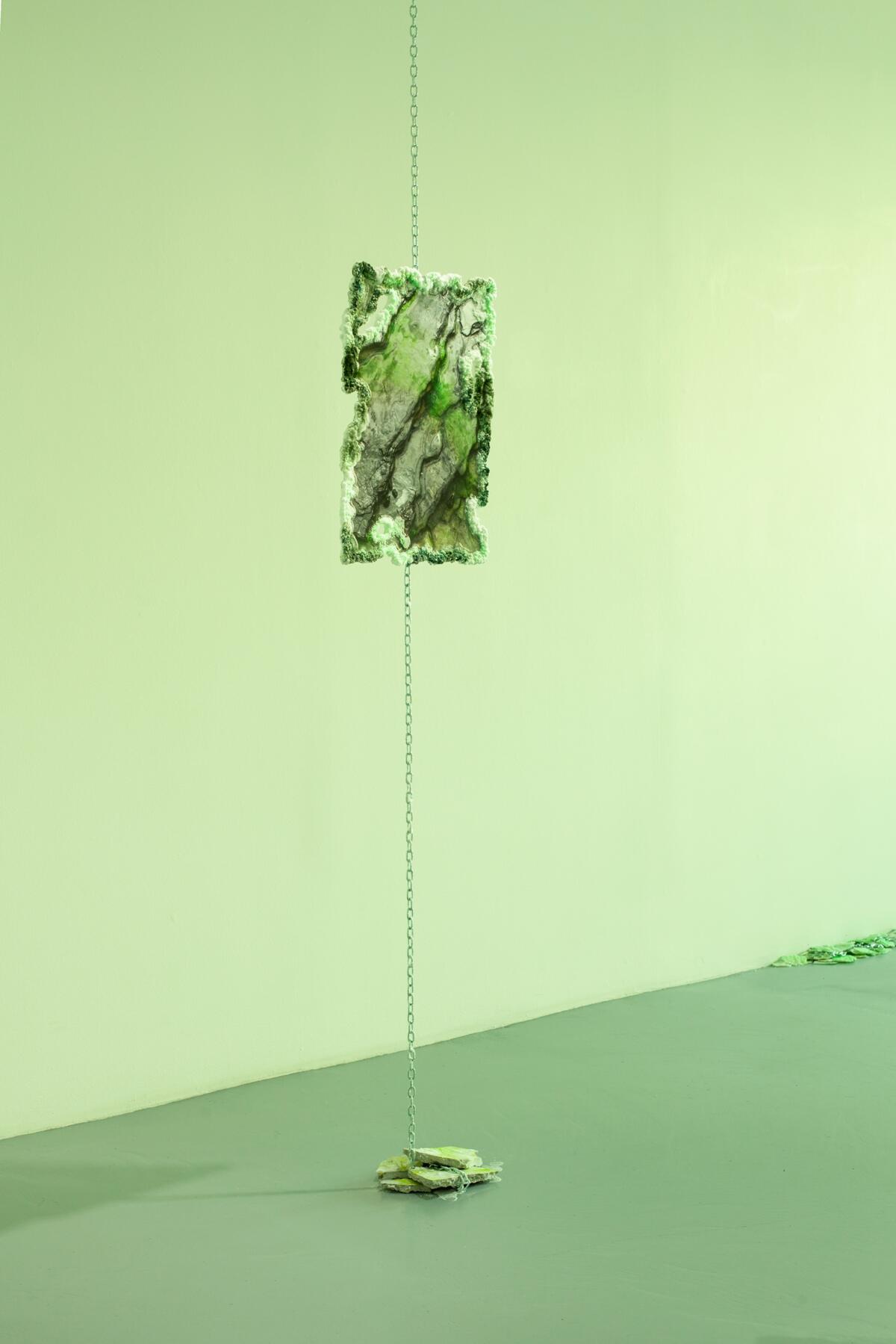

At her exhibition at Kogo Gallery, Õllek is reflecting on the Baltic Sea through the presence of algal blooms, a speculative perspective and a sedimented past – through several-hundred-million-year-old marine sedimentary rocks, limestone. Within a wide range of different (approximately 100) limestone types in Estonia, formed between 472 and 416 million years ago, she’s particularly interested in the Silurian period’s Borealis limestone. Also known as shell limestone, it consists largely of the fossilised shells of the brachiopod Borealis borealis, and it’s claimed that the world’s biggest Borealis Bank deposit is located in Estonia. This sedimentary layer was formed approximately 440 million years ago, when the area of Estonia was at the equator, covered by a shallow tropical sea, and when various mollusks, trilobites, cephalopods, corals, and sea lilies were abundantly found.
For the solo exhibition at Kogo gallery, Kristina Õllek has been working with limestone, sea salt, cyanobacteria, bioplastic and clay, and other materials that become part of the photographic works and the installation, acquiring another physical layer and materiality with its own agency.




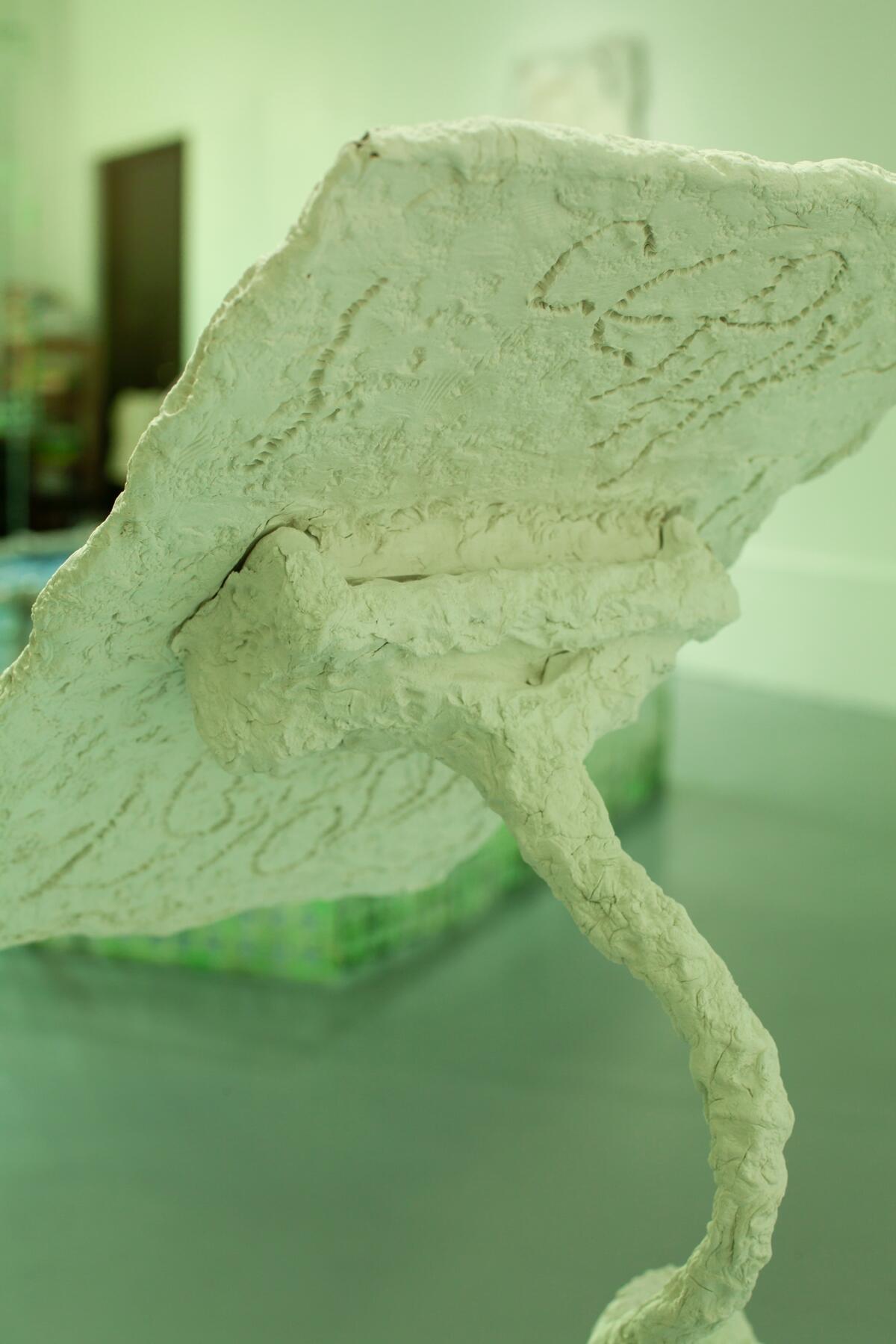
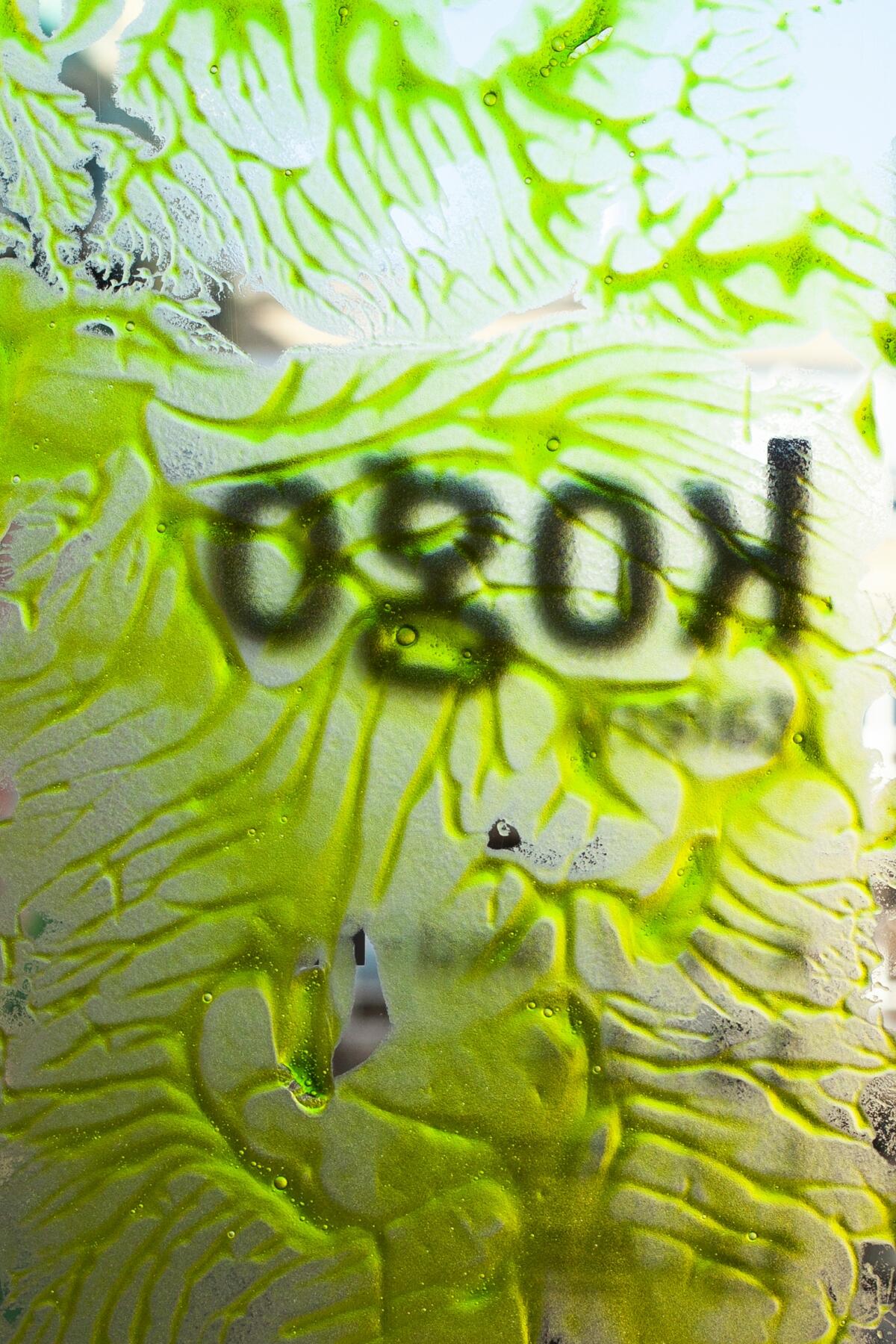
Kristina Õllek (b.1989) is a visual artist based in Tallinn, Estonia. She is working in the field of photography, video and installation, with a focus on investigating representational processes, geological matter, aquatic ecosystems, and the human-made environment. Kristina Õllek has a BA (2013) and MA degree (2016) in the Photography Department of the Estonian Academy of Arts and she has complemented her studies in Berlin at Kunsthochschule Berlin-Weissensee (2012) and in Rotterdam at Piet Zwart Institute (2016). Her works have been shown in various international group and solo exhibitions around Europe.
Imprint
| Artist | Kristina Õllek |
| Exhibition | Waters of Hypoxic Slime and Tropic Lime |
| Place / venue | Kogo Gallery |
| Dates | 31 March – 20 May 2023 |
| Exhibition design | Kert Viiart |
| Index | Kert Viiart Kogo Gallery Kristina Õllek |
